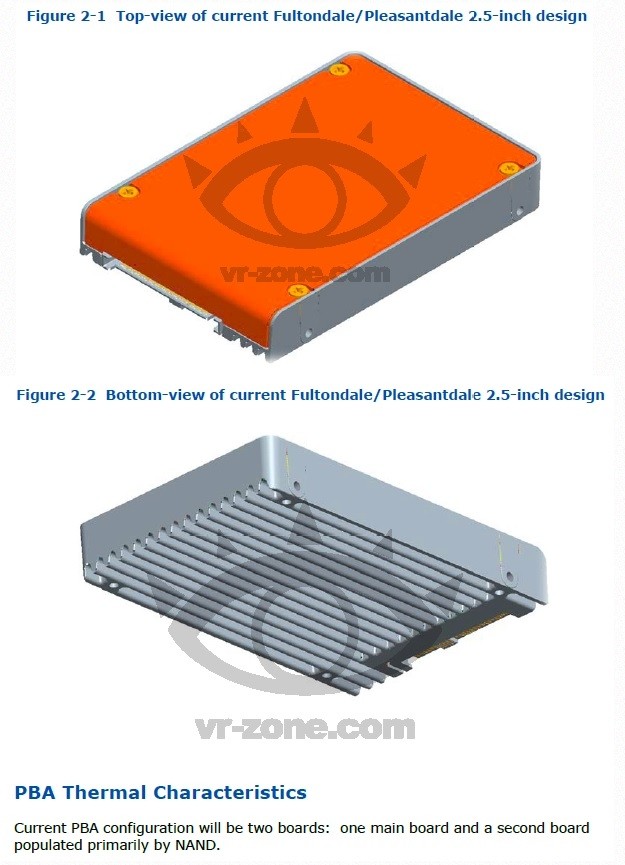Intel is readying two new lines of high-capacity solid state drives - Fultondale and Pleasantdale - for release sometime in late 2014. However during internal testing of the SSDs, Intel has discovered a few issues that require some changes to the typical SSD design.
VR-Zone reports that the new drives run hotter than typical current-gen SSDs, so Intel has had to incorporate a small, ribbed heatsink on the bottom to facilitate better heat dissipation. Fultondale and Pleasantdale will still be packaged in 2.5-inch cases, but going on leaked images, they look thicker than a typical 2.5-inch solid state.

It's expected these new drives will come in capacities as large as 800 and 1,600 GB, with two boards inside. One of the boards will contain NAND and the memory controller, and the other just NAND. Under maximum workload, the drives will draw 25W of power, which is likely the reason a heatsink is necessary.
Not much else is known about these drives, but it appears they're being designed for data centers rather than consumer devices and desktops. Expect more information and a full unveiling at the Intel Developer Forum in Beijing, scheduled for Q4 2014.